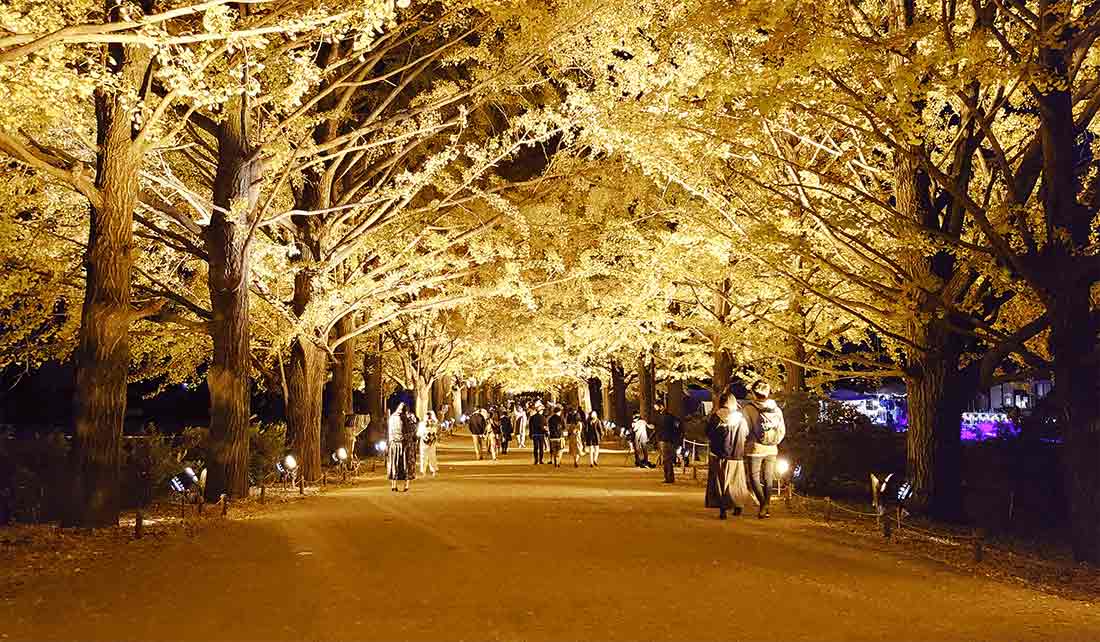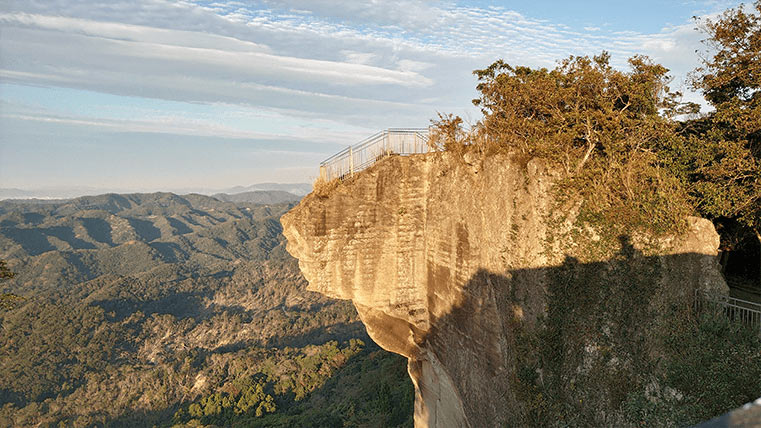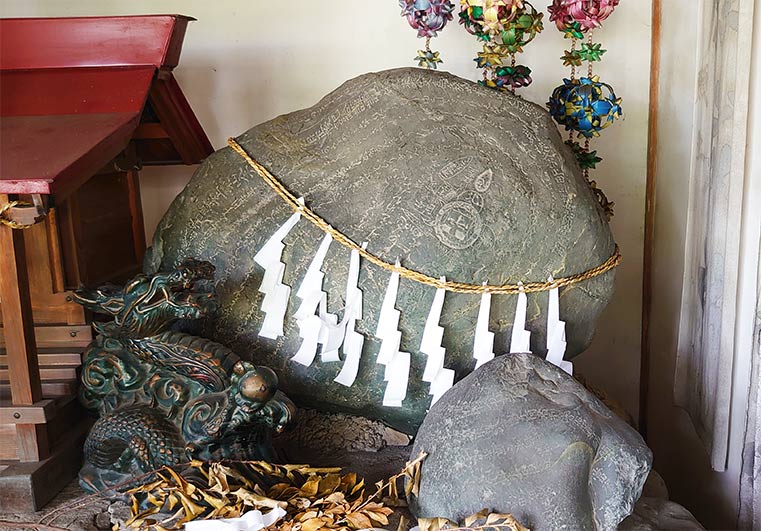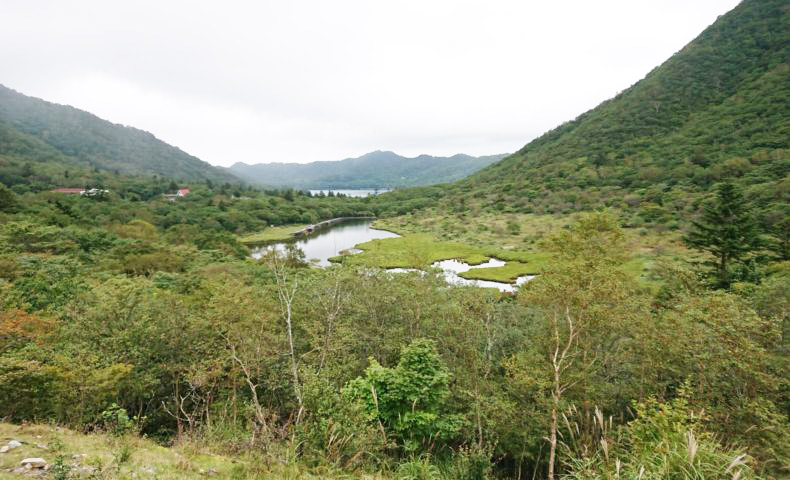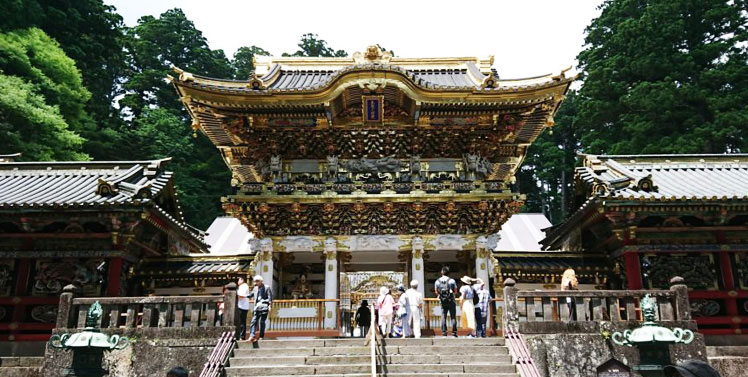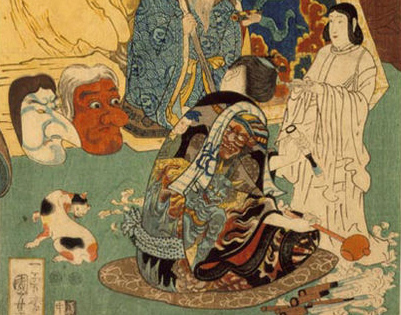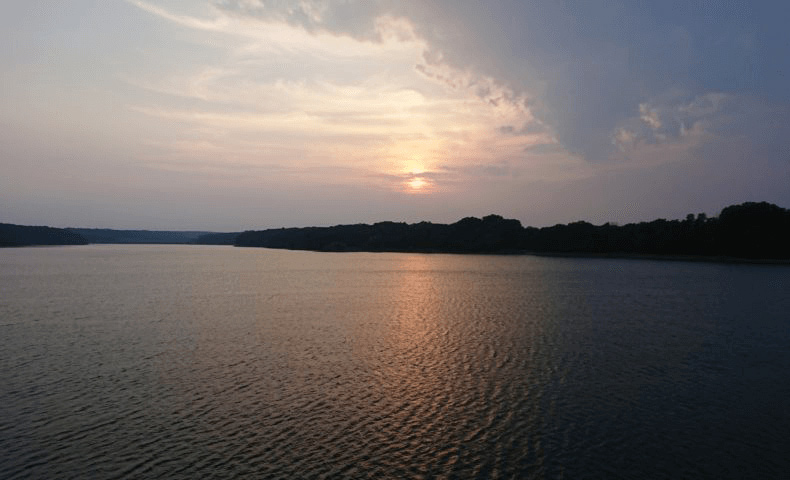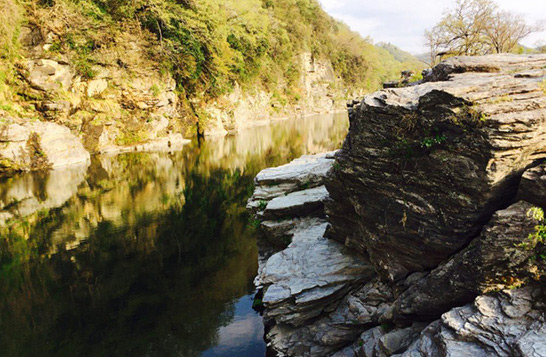Mt. Oyama | Tourist attractions and a religious background

Mt. Oyama is one of the beautiful mountains where is located in Kanagawa prefecture next to Tokyo and owns a historic temple, rich nature, and interesting folklore.
A lot of Japanese people visit the mountain every season to see the great scenery like illuminating autumn leaves, the sunrise on new year’s day, and go worship the shrine.
In this time, I introduced a feature and travel information about Mt. Oyama explaining an interesting legend that is passed down in each spot.
Table of Content
- The background at Mt. Oyama
- The routes and spots in Mt. Oyama
- Kosodate-Jizo
- Tsumekiri-Jizo
- Kubinashi-Jizo
- Kobo-no-mizu
- Mumyo-bashi
- Chouon-do
- Megata-ishi
- Sakasabotaizyu
- Autumn leaves in Oyama Temple
- Oyama-Afuri Shrine
- Fufu-sugi
- Fujimi-dai
- Tengu-no-Hanatsukiishi
- To the top of Mt. Oyama
- Niju-no-Taki
- Noroi-no-Sugi
- Shop street
- How to access Mt. Oyama
- Conclusion of Mt. Oyama
The background at Mt. Oyama
Mt. Oyama is a popular mountain and has a good reputation from tourists, but the history of the mountain is very deep.
It is said that the mountain was subject to the mountain worship from people in old age considerably, and Japanese monk did austere training in the past.
In reality, the earthenware that is made around primitive age was discovered around here, so it is said that the mountain worship in Mt. Oyama might also begin in that age according to one theory.
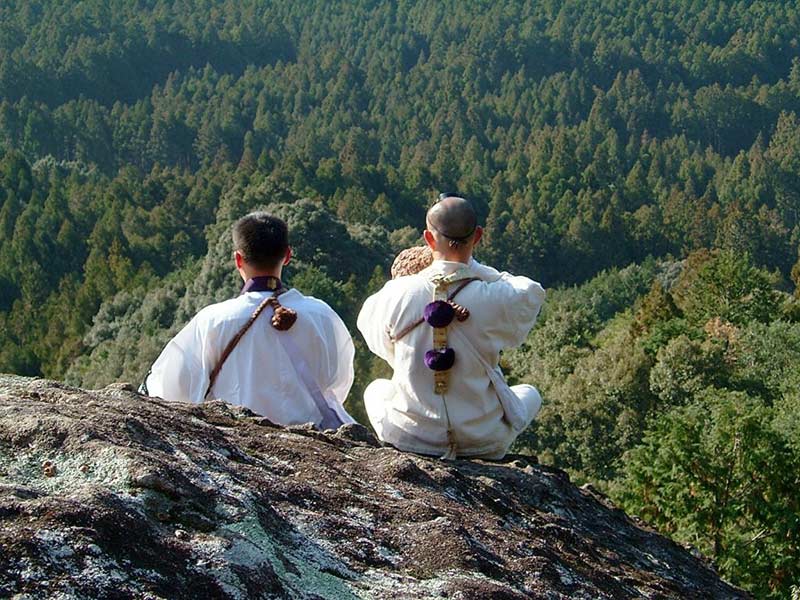
Particularly, Oyama- Afuri Shrine has worshiped the god of water that people pray for rain and help agriculture from drought.
So this area was called Amefuri Yama (Rainfall mountain) as another name and known widely through Japanese painting, storytelling, and so on.
The routes and spots in Mt. Oyama
In modern times, Mt. Oyama has got a good reputation not only regional people.
This is because the mountain is 1252 meters high and cable cars are available to the Oyama-Afuri shrine where is situated in the middle point in 696 meters high.

Moreover, you can hike to the top and go to travel around the interesting spots on a day trip from Tokyo by train and bus.
The feature and main spots in Mt. Oyama are below.
- The beautiful hiking course
- Oyama-Afuri Shrine
- Oyama-Temple
- The top of Mt. Oyama
When you access the departure point at Mt. Oyama, three ways to go to Oyama-Afuri Shrine where is located in the middle point at the mountain are available.
The easiest way is using a cable car near shop street, but if you enjoy hiking itself, the route for the Onna-Zaka or Otoko-Zaka must be chosen.
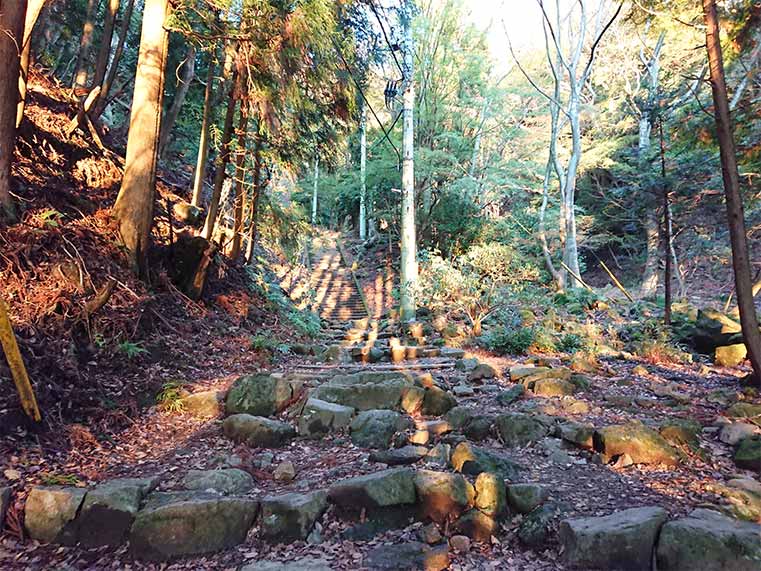
The route of Onna-Zaka is comparatively easy to hike, but Otoko-Zaka is harder than it. And if you choose the latter way, Oyama-Temple can not be visited due to out of the route.
In addition, the route of Onna-Zaka has a lot of mysterious and curious spots where shows Japanese religious stone sculpture called Jizo.
So, I strongly recommend to go through this hiking course and introduce these interesting points.
Kosodate-Jizo
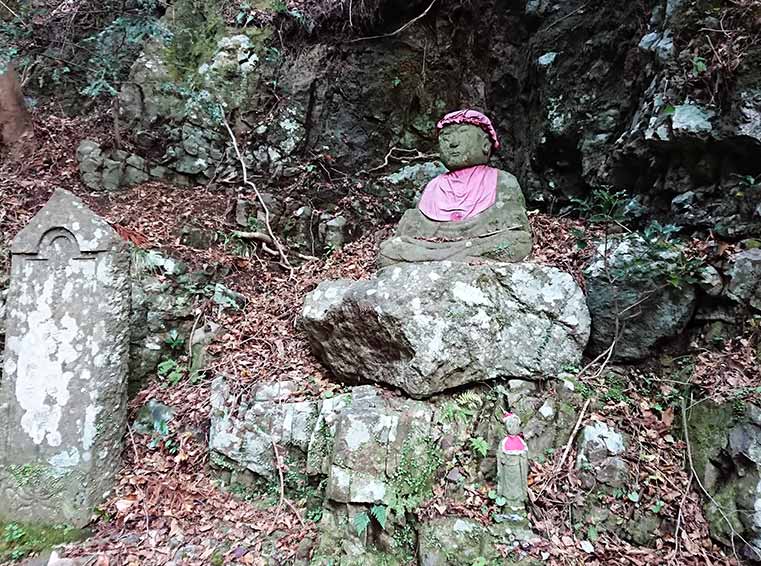
Jizo is one of the subjects to faith in Buddhism and thought that it helps people from suffering instead of god, so it can be seen everywhere in Japan.
Jizo – small Buddism sculpture around Japan
So, you will see these Jizo sculptures on the way, and it has to tell teaching with an interesting legend in each spot in Mt. Oyama.
In this spot, the object is known as Kosodate-Jizo that means Parenting Jizo.
The statue was originally made for an ordinal Jizo as well as others, but it is said that the face changed like a child before people know it.
So, it is alleged that if you pray for this status, your children will be got to grow well.
Tsumekiri-Jizo
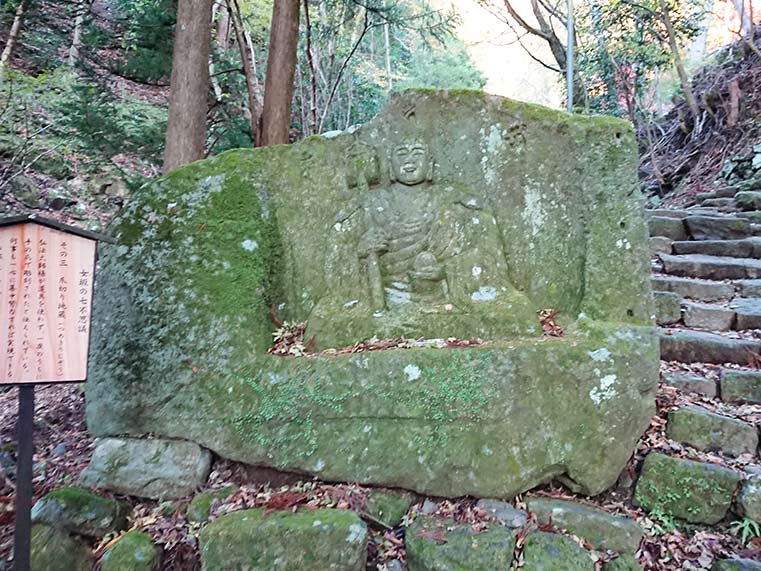
The state is called Tsumekiri Jizo that means Jizo who cut nails in English.
Referring to the folklore here, the sculpture was made by a Japanese monk called Kobo-Daishi (another name is Kukai), and he only used his nails to curve.
It would be the just legend, but the most important thing is that he put his teaching and message into the work.
The sculpture represents that if you try to do and concentrate on just one thing, it will be achieved.
As a side note, it is said that Kobo-Daishi was made it in one night, but another person called Stranger Sokudo who lived in the Chichibu area also left a legend that curved 2 meters statu in one day by using his craw.
So if you are interested in his work and strange legend, please read the below article as well.
The legend of stranger Sokudo and his encryption in Chichibu
Kubinashi-Jizo
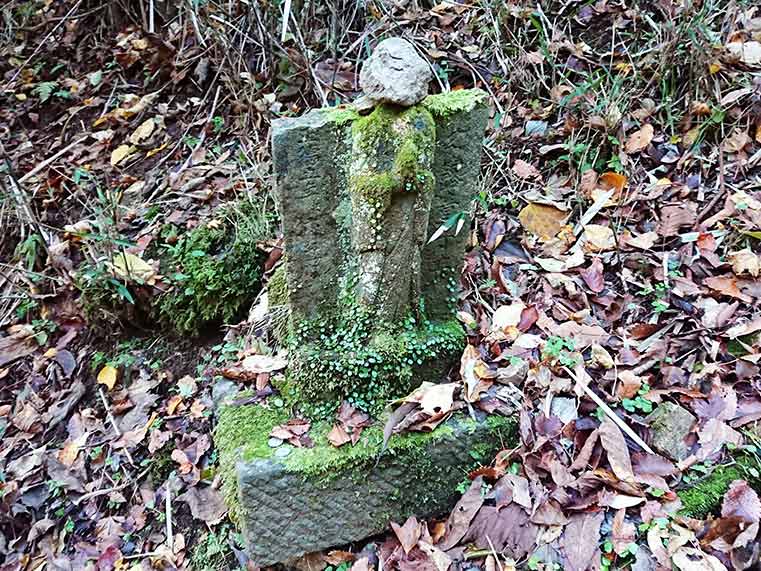
If you have traveled to a traditional area in Japan, you might have seen a Jizo that face part is destroyed.
This is because the faith of Buddhism including the culture of Jizo was accepted by people with the original Japanese religion called Shinto, but a movement that banishes Buddhism from Japanese religion by a new government occurred in1868.
As a result, many temples and Jizo sculptures were destroyed in the past, so some Jizo sculptures are missing a face part even now, and it is called Kubinashi Jizo that means none neck Jizo.
In Mt. Oyama, you can see that sculpture that is exchanged for the alternative stone mysteriously.
If you want to know this incident and the historical background of the religious movement, please check the below article as well.
The religious movement and history in Japan
Kobo-no-mizu
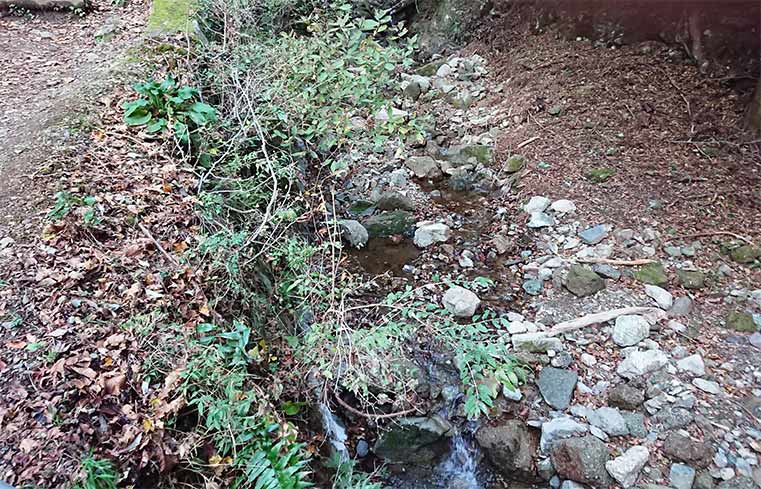
The area is called Water of Kobo who was the same person as Tsumekiri-Ishi.
The legend in this area is that when Kobo-Daishi poked a cane on the rock, then freshwater overflowed from there.
After that, the water flows even the summer season without running out, and the amount of the water does not always change according to the folklore here.
As a result, this water has another name called Kobo-no-Kaji-Reisui which means The sacred water of Koubou.
Mumyo-bashi
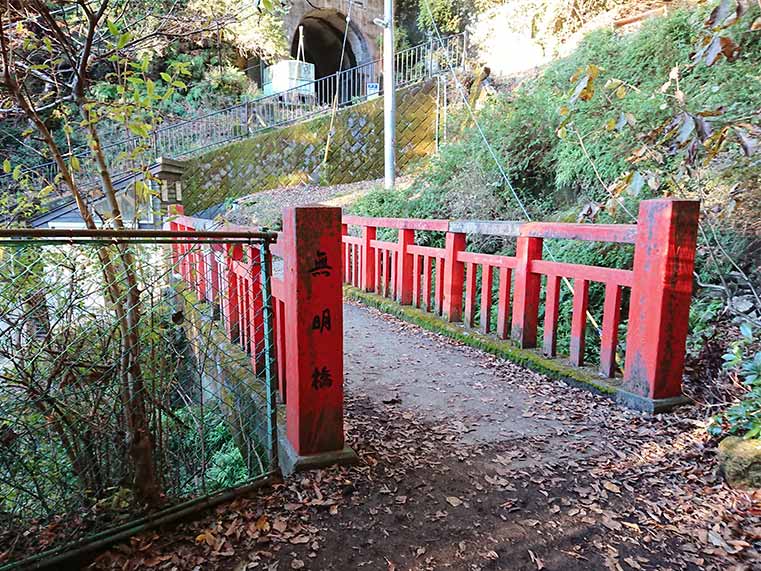
This small bridge is called Mumyo-Bashi (Mumyo-bridge).
The legend at the bridge is that if you pass through here as talking, it leads to misfortune such as losing property, falling from the bridge.
Chouon-do
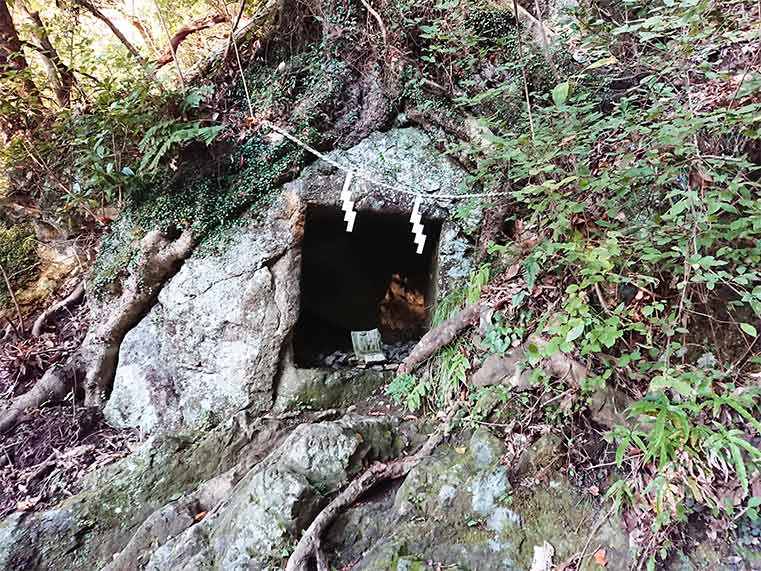
The site is called Chouon-do (Chouon Cave).
If you try to be empty your mind and listening intently, the sound of the wave like high tide will be heard from the cave according to the folklore here.
Megata-ishi
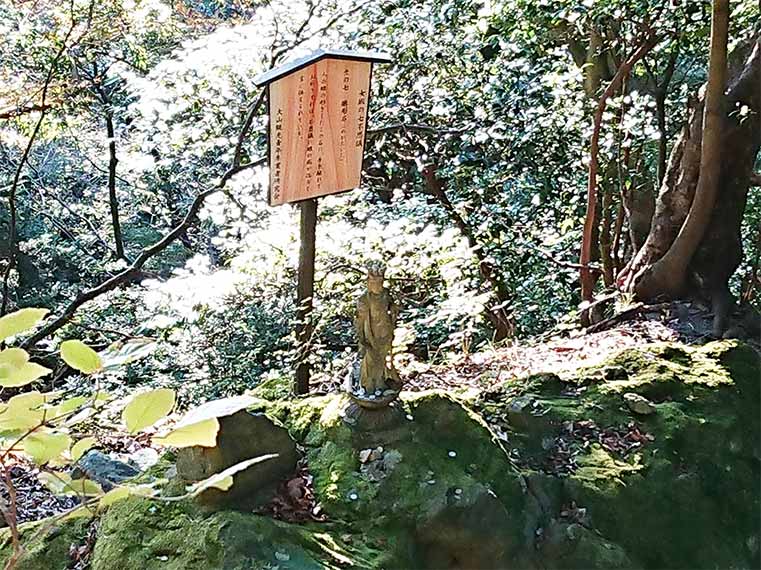
The stone called Megata-Ishi and a small Jizo sculpture are set together (the stone is next to the jizo sculpture).
Mega-Ishi means the stone in the shape of a human’s eye and is described that if you pray as touching the stone, it leads to cure your disease of eyes.
Sakasabotaizyu

Sakasabotaizyu means “The tree which is upside down” in Japanese.
The reason why it is named like Sakasabotaizyu is that the upper part of the tree seems to be thicker than the lower part.
However, the tree is the second generation at present, so the look of the tree has changed in contrast to that name consequently.
Autumn leaves in Oyama Temple

After you visited a mysterious spot at the route of Onna-zaka, Oyama Temple will show up in front of you.
This Oyama-Temple has a long history that built in 755 and shows you the scenery that makes you feel Japanese beauty with Autumn leaves.
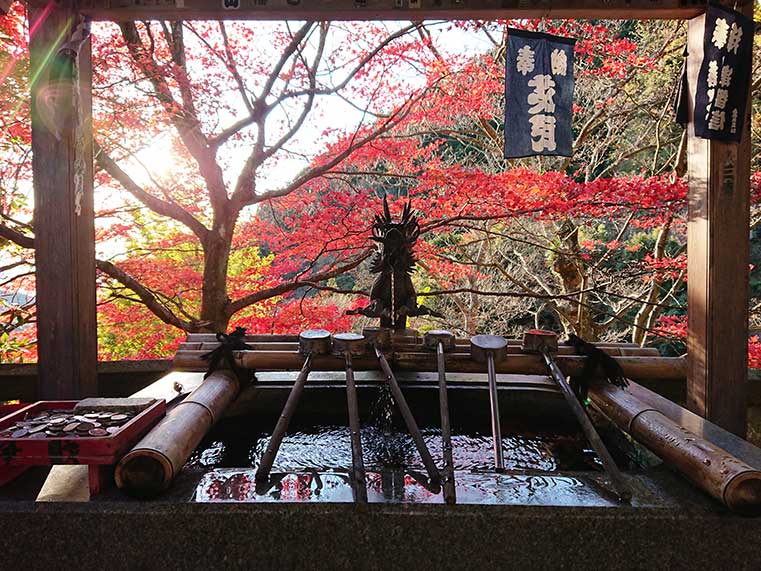
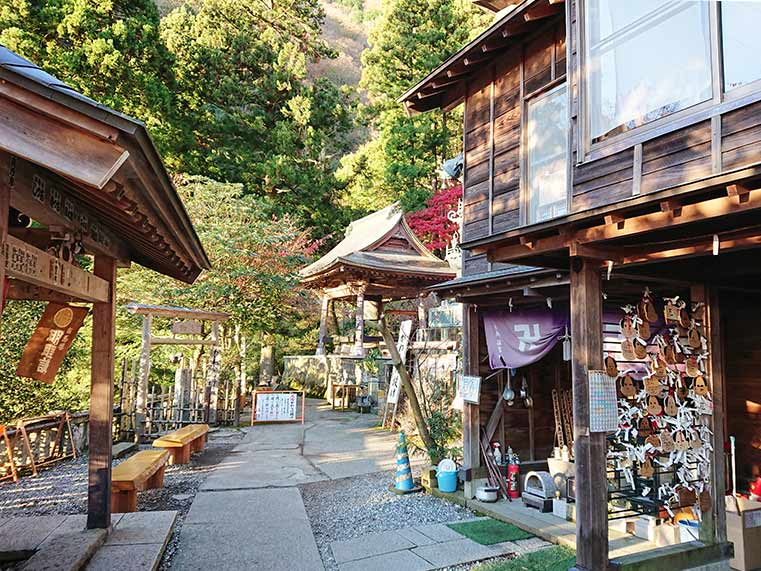
Surprisingly, the leaves bloom as it encloses stone stairs between Oyama-Temple, and you can walk that way such as a natural tunnel.
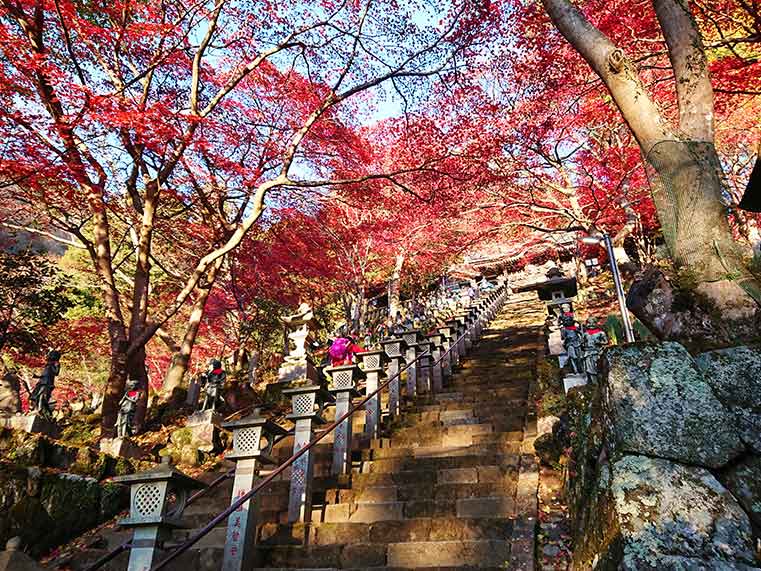
The photo was taken on 30th November, but the best season for blooming is ordinary from mid-November to late the month.
Moreover, this area is illuminated from mid-November in a week every year, so if you want to see more fantastic scenery, visiting this season must be better.
Oyama-Afuri Shrine
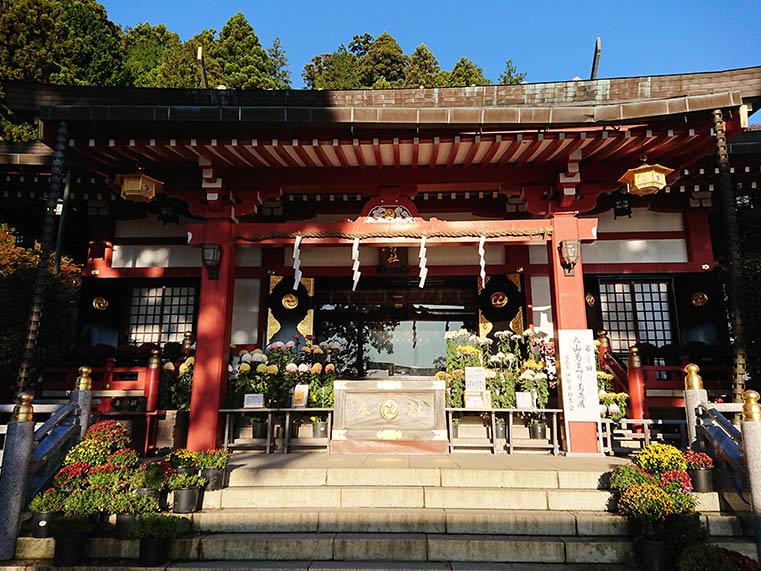
After you pass the temple and keep hiking, Oyama-Afuri Shrine will appear in front of you.

According to the official web site in Oyama-Afuri, the shrine was built before approximately 2,200 years ago and are worshipped by people as a site where enshrined the god of the mountain for water, industry, and fortune of the sea.
About Oyama-Afuri Shrine. (n.d.). Oyama-Afuri Shrine Offcial Web Site. http://www.afuri.or.jp/about/
So, it can be said that the shrine is one of the oldest shrines in Japan and got a religious belief from many people over age.
Not only historical shrine, If it is good weather, the scenery around the Sagami area including the sea in Kanagawa prefecture will be surveyed.
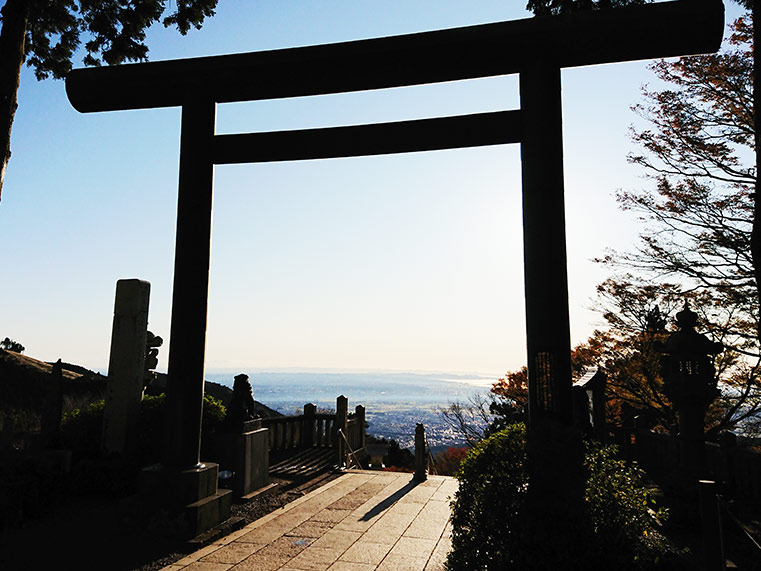
The shrine is standing at the middle of Mt. Oyama and near the confluence point of two hiking courses and cable cars. So, you can aim at the top of the mountain from here straight.
Fufu-sugi
When you aim to the top of the Mt. Oyama, a curious spot will be passed through.
First, the big tree named Fufu-sugi that means a married couple of tree is on the way.
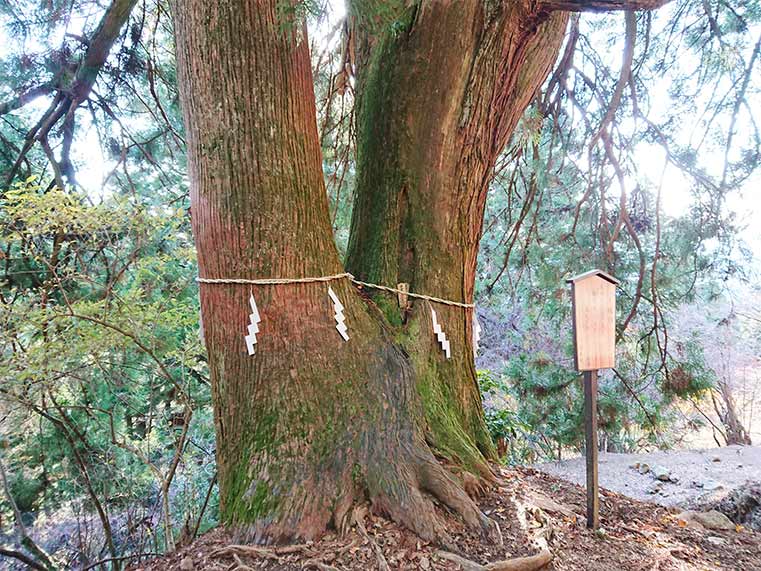
The tree is expected around 5 to 6 hundreds years old, so it is speculated as one of the oldest trees in Mt. Oyama.
Fujimi-dai
After you pass Fufu-sugi and keep walking, Fujimi-dai must be passed through.
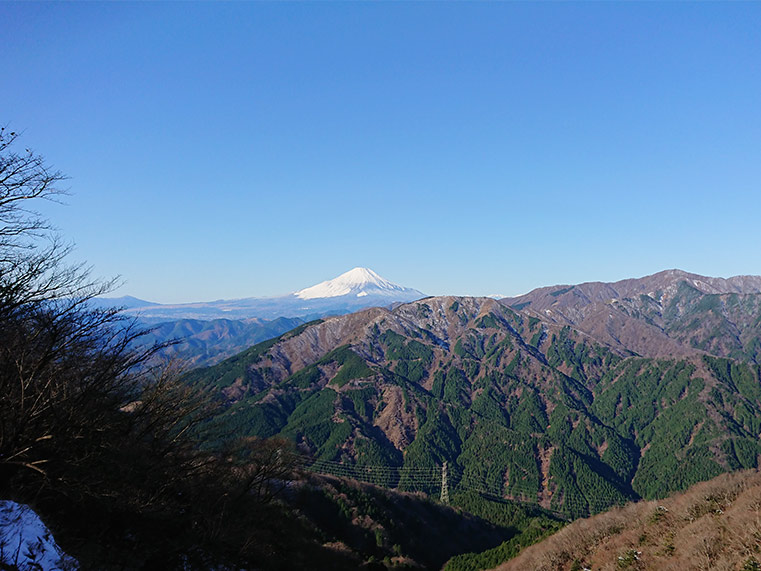
This small observatory shows the Mt. Fuji clearly if you are lucky with good weather.
Just so you know, the tea house was working here in the Edo period, and this beautiful scenery was described in Japanese painting in the past.
Tengu-no-Hanatsukiishi
This spot is named Tengu-no-Hanatsukiishi which means the rock that is thrusted by Tengu’s nose.
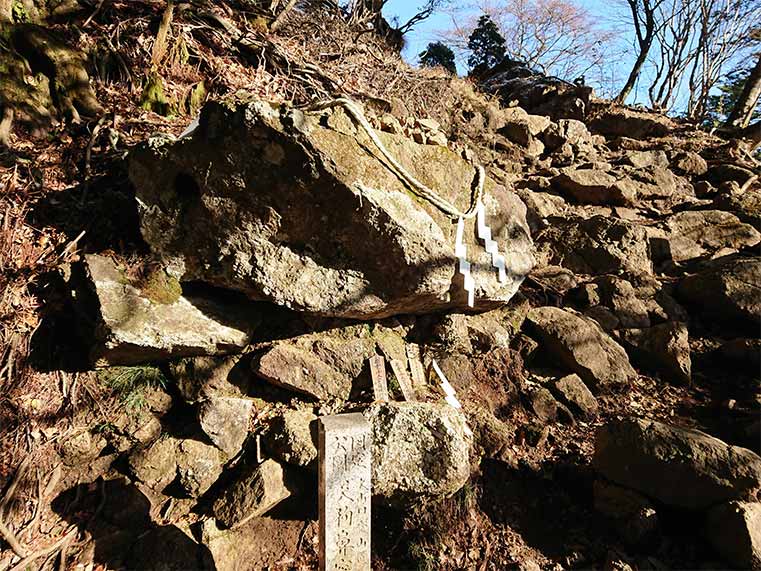
Tengu is one of the Japanese monsters that has a red face, long nose, and wearing a monk’s clothing.
In this place, there is a curious hole on the stone and it is said that Tengu made the hole by the nose because it seems to just fit for depth of Tegu’s nose.

As a side note, Tengu has been thought that it is a fictitious monster, but it was often witnessed in a spread mountain over age in past Japan.
If you want to know the sacred mountain and a legend of Tengu, please check the past articles
Tengu might have existed in 19th century – Japanese Yokai
To the top of Mt. Oyama
If you hike in Mt. Oyama before or at the beginning of December, the snow road might be walked. But the combination of snow and mountain road fell us a unique atmosphere.
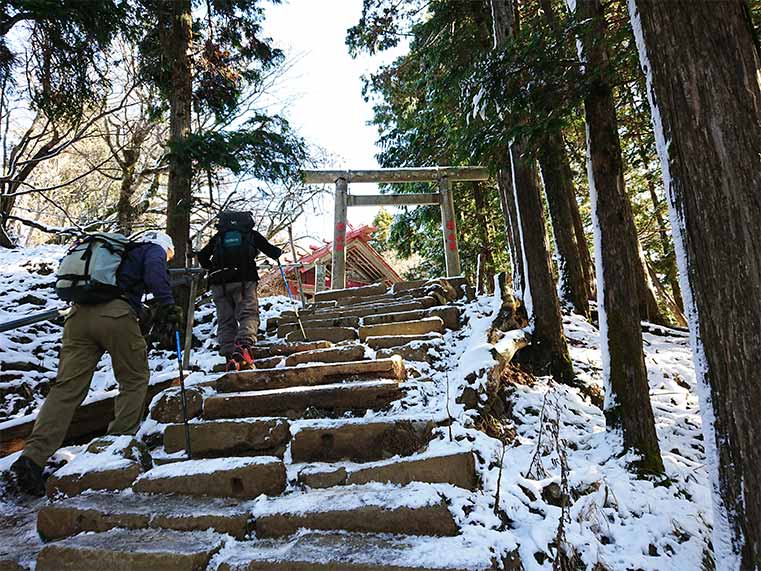
After passing there, you will reach the top of the mountain and see the great scenery.
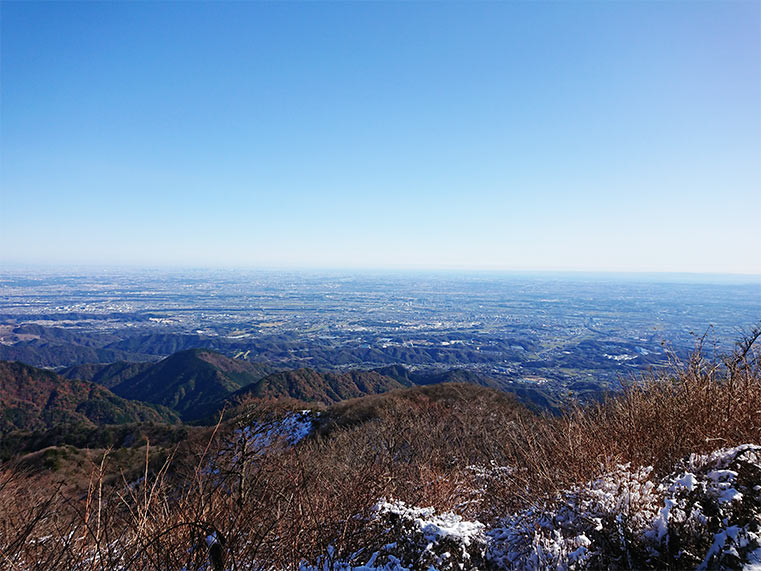
The landscape is more magnificent than the scenery that can be able to be seen from Oyama-Afuri Shrine and overlook the whole Sagami area in Kanagawa prefecture.
Of course, a visitor can take a rest and lunch here seeing this magnificent scenery.
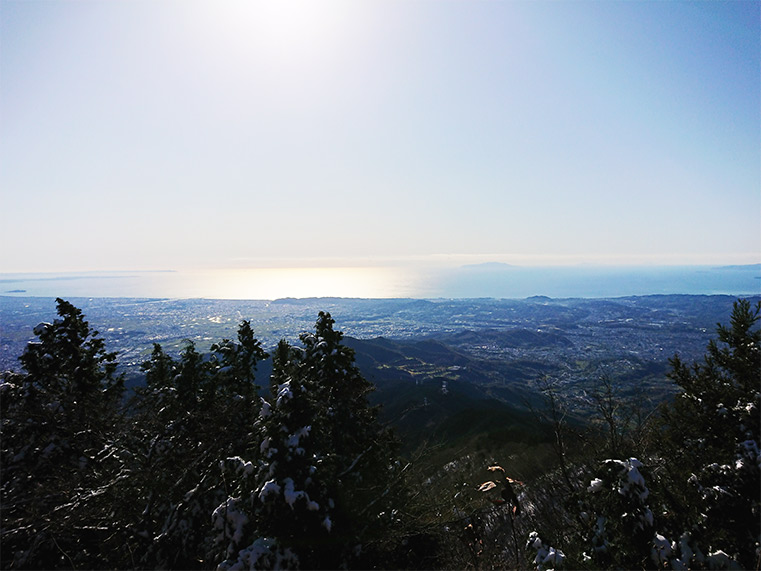
However, this season is rather cold due to snow, so you should keep in mind that a toilet can not be used by the freeze.
Niju-no-Taki
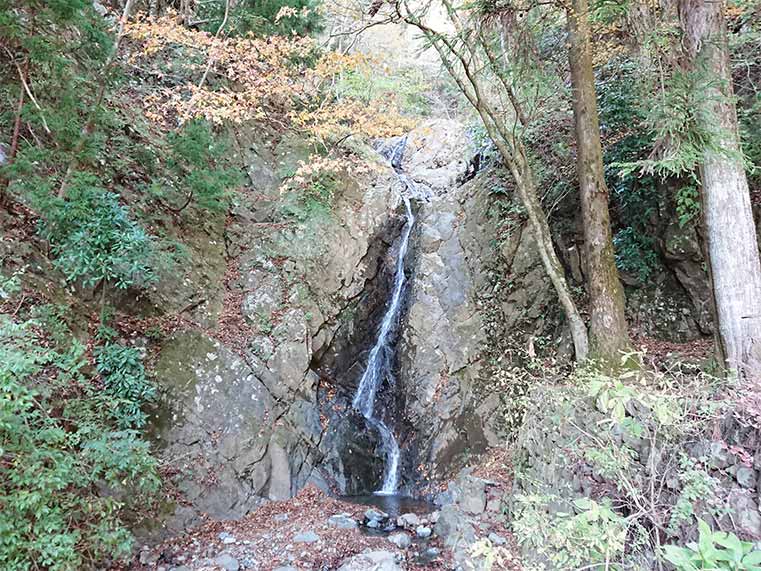
When you go down from the top of Mt. Oyama, another route with unique spots is available.
The first site is Nizyu Waterfall that means double waterfall in Japanese.
The waterfall was originally structured by one rock, but it separated to up and bottom as two rocks, so the name of this site originates from it.
In addition, a lot of Japanese monks did ascetic training by standing under the waterfall in the past.
As a result, this place is sacred place even now and called Purification Waterfall as another name.
Noroi-no-Sugi
An interesting tree called Noroi-no-Sugi which means “the cedar tree of the curse” was next to Niju-no-Taki.
As stated by the legend of the Oyama-Afuri Shrine, it is said that the tree was used as a tool to curse someone in the past.
For instance, when someone tried to curse a person, the doll that is motifed on a target person was crucified on the tree from midnight to 4 am.
Such this, the way of the ritual that uses a nail and strikes it to the doll on the tree was carried out actually in a region in past Japan as one of the curse methods.

The age of the tree was expected over 1000 years, and the legend is handed down even now, but it was destroyed due to a huge earthquake in the past.
Just so you know, the tree which is standing near the waterfall is just a sacred tree at Nizyu-Shrine not Noroi-no-Sugi.
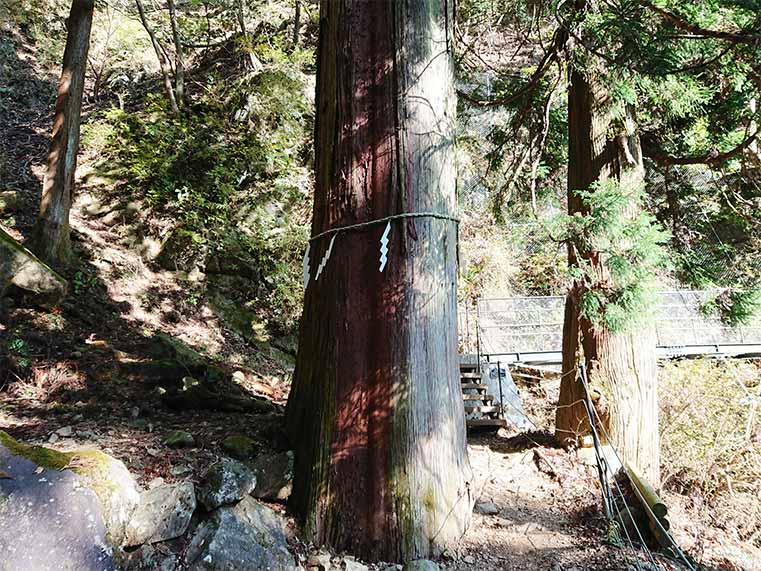
Shop street
After you go down Mt. Oyama and arrive near the departure point, shop street Koma-Sando (Komasan-Street) will be passed through.
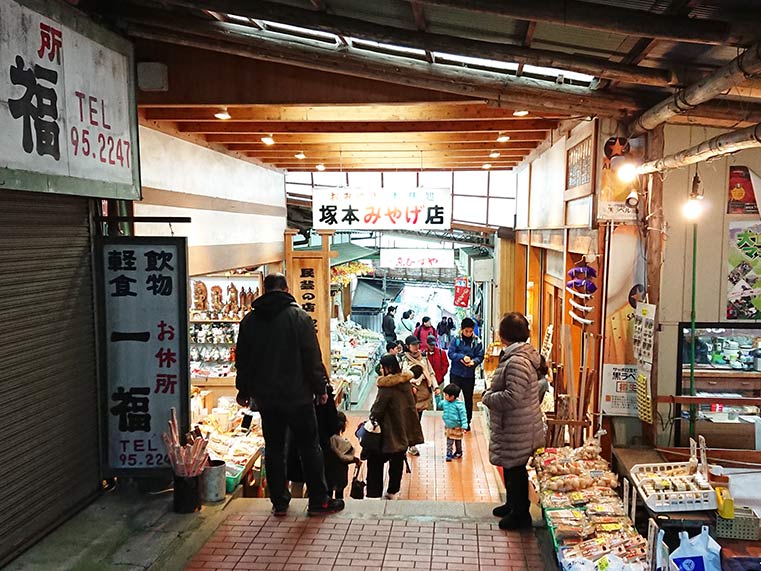
In this street, a lot of souvenirs are sold, and a Japanese cafe, accommodation is also available here. So this area will be helpful for your hiking.
How to access Mt. Oyama
The access to Mt. Oyama is quite simple if a visit from Shinjuku Station.
First, you have to get on the train on Odakyu Odawara Line bound for Odawara Station that takes about an hour and can go directly without changing the line friom Shinjuku Station.
After that, the bus at Iseharaeki-Kitaguchi station bound for Oyama Cable Bus Station must be got on, and it takes less than 30minute.
Conclusion of Mt. Oyama
As I mentioned, Oyama has more mysterious spots and very interesting folklore that pass down overage.
If you want to know more Japanese folklore like mountain worship and those spots, please check other articles on this website.
